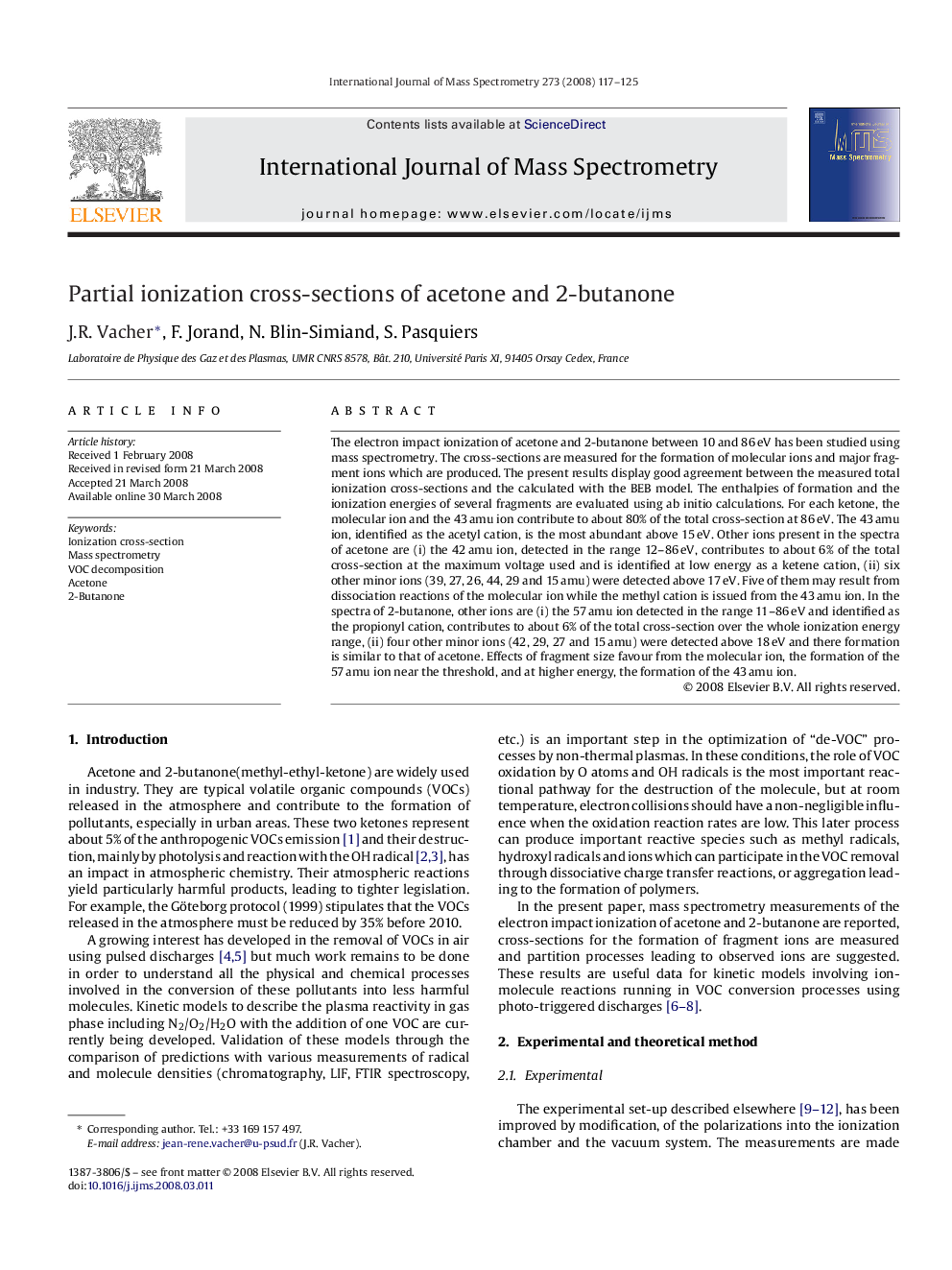| کد مقاله | کد نشریه | سال انتشار | مقاله انگلیسی | نسخه تمام متن |
|---|---|---|---|---|
| 1193888 | 1492356 | 2008 | 9 صفحه PDF | دانلود رایگان |

The electron impact ionization of acetone and 2-butanone between 10 and 86 eV has been studied using mass spectrometry. The cross-sections are measured for the formation of molecular ions and major fragment ions which are produced. The present results display good agreement between the measured total ionization cross-sections and the calculated with the BEB model. The enthalpies of formation and the ionization energies of several fragments are evaluated using ab initio calculations. For each ketone, the molecular ion and the 43 amu ion contribute to about 80% of the total cross-section at 86 eV. The 43 amu ion, identified as the acetyl cation, is the most abundant above 15 eV. Other ions present in the spectra of acetone are (i) the 42 amu ion, detected in the range 12–86 eV, contributes to about 6% of the total cross-section at the maximum voltage used and is identified at low energy as a ketene cation, (ii) six other minor ions (39, 27, 26, 44, 29 and 15 amu) were detected above 17 eV. Five of them may result from dissociation reactions of the molecular ion while the methyl cation is issued from the 43 amu ion. In the spectra of 2-butanone, other ions are (i) the 57 amu ion detected in the range 11–86 eV and identified as the propionyl cation, contributes to about 6% of the total cross-section over the whole ionization energy range, (ii) four other minor ions (42, 29, 27 and 15 amu) were detected above 18 eV and there formation is similar to that of acetone. Effects of fragment size favour from the molecular ion, the formation of the 57 amu ion near the threshold, and at higher energy, the formation of the 43 amu ion.
Journal: International Journal of Mass Spectrometry - Volume 273, Issue 3, 15 June 2008, Pages 117–125